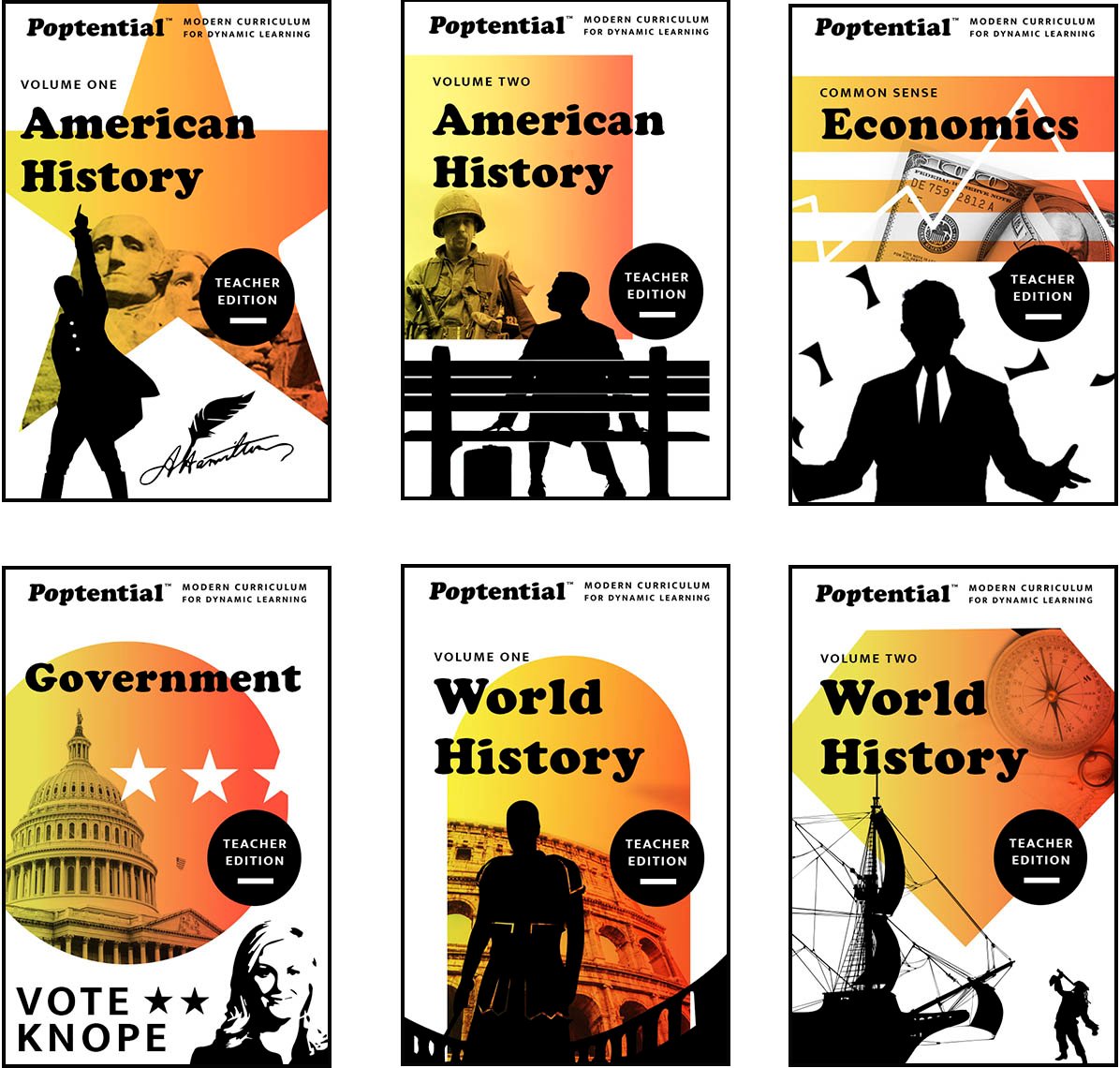
When Gladiator teaches Roman history, student boredom is slayed.
Poptential is a modern curriculum that pairs pop culture media with engaging digital storytelling for effective, dynamic learning.
72% of teachers using Poptential say
students are more engaged


Set to school
calendars

Compatible with
classroom apps

Free for all
educators

Proven to work
gangbusters
Four subjects now released.
- American History (Vol. 1 and 2)
- World History (Vol. 1 and 2)
- US Government
- Economic
Don’t see your subject? Don’t worry! More are being developed as we speak. Simply sign up for our subject luanch notifications and we’ll be in touch when the work is done.


Popping with pop culture.
We’re not usually name-droppers, but with curriculum like this, it’s practically a must. Here are some of the famous movies, sticoms
and other popular shows we’ve used to increase student engagement and retention:
The Patriot, Hamilton, 12 Years a Slave, Spongebob, Jimmy Fallon, The Lone Ranger, Tombstone, V is for Vendetta, Seabiscuit, The Great Gatsby, Cinderella Man, I Love Lucy, Argo, Family Guy, Parks ’n Rec, Seineld, and many more.
click here to view full curriculm
Curriculum that grabs attention.
Below are descriptions for the first modules in each subject. A taste. A lick-your-lips kind of teaser. If we whet your appetite, click here to access full curriculm.








Organized with engagement in mind.
All curriculum is divided into volumes, modules and lessons to aid in comprehension and create natural breaks for check-ins. See the outline of your suject here.
Amplified with Bell Ringers.
A little tid bit and some intriguing questions make for a spike in curriousity and engagement. Bell Ringers like this example are placed throughout the curriculum to create dynamic leaning. See more Bell Ringers.
On May 28, 1863, the 54th Massachusetts Infantry departed for combat. The 54th was the first African-American regiment created after Abraham Lincoln authorized the recruitment of free blacks and former slaves into the military.
The Civil War was originally based upon the goal to reunite the severed states; to not allow the United States to tear itself apart. Ending slavery was not a stated objective. As the war progressed, and with the Emancipation Proclamation declaring slaves free in the Confederacy, ending slavery became the heart of the Civil War. The men of the 54th regiment, a volunteer regiment, not only fought to end slavery but stood up for other injustices as well. White soldiers were getting paid $3 more a week. The entire regiment refused to accept their wages until wages of white and black soldiers were equal. This only happened once the war was almost over.
The regiment performed heroically, in the frontal assault of Fort Wagner in 1863, took 40 percent of casualties, an event immortalized in the film, Glory.
